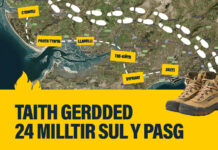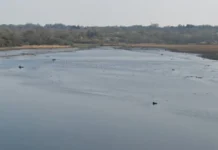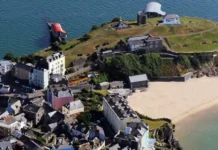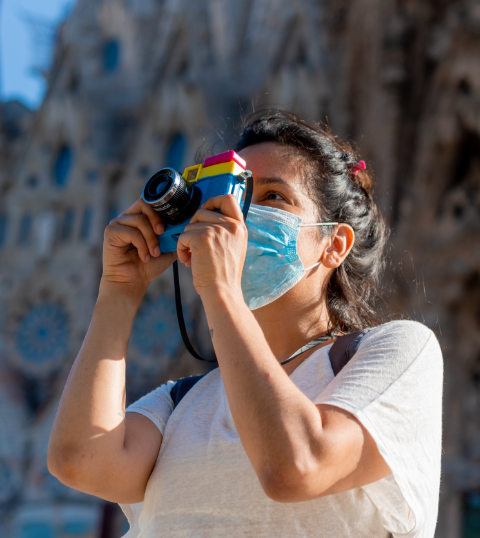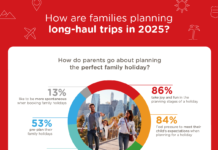How to practise
responsible tourism during COVID-19
How COVID-19 affected travel
The coronavirus pandemic has hit us all hard. The way we work, the way we socialise, even the way we exercise – it all changed. When the UK Government announced we’d be going into lockdown on the 23rd March 2020, most plans, including travel, were put on hold.
But it wasn’t just the UK affected. Across the globe, borders closed and citizens were asked to stay home. Coronavirus brought the world to a standstill. Just weeks before the UK lockdown, we’d seen how Italy had become the ground zero of Europe’s coronavirus crisis (declaring a total national lockdown on 10th March). It was a cautionary tale of what was to come in the UK and elsewhere.
Across the world, popular destinations usually teeming with visitors were empty. Cafes, bars, restaurants, museums, theatres, theme parks and all the other places we might visit on holiday around the world closed their doors. Major events which contribute to tourism, such as the 2020 Tokyo Olympics, were also postponed.
Not only were visitor numbers halted, but the journeys made locally by residents were falling. By 31st March, according to data from travel app Citymapper, which includes journeys using public transport as well as walking, residents in cities like Madrid, Paris, London and New York were making fewer than one-tenth of the journeys using the app as they normally would. From the start, it was clear COVID-19 would affect us on a local and global basis.
But we’ve also shown resilience, compassion and a sense of unity. It’s something we’ve gone – and are going – through together. Aviation analyst Paul Charles told the BBC:
“We will get through this. We have an inherent desire to travel. It’s in our DNA. The virus is not going to kill that off. We will want to travel again and the industry will recover.”

The accessibility of travel before the coronavirus outbreak
Before the outbreak, you could book a flight in the morning and be in another country by evening. Although it’s not the way many people travel, it highlights how accessible travel can be. It’s never been easier to learn about the world and meet people from different cultures.
But where does the idea of wanting to do this come from? Tourist tendencies can be traced back to early civilisations such as the Phoenicians, Mayans and the Shang dynasty, when people travelled not only for commercial purposes, but out of curiosity. There are early religious reasons for travel too, with pilgrimages to Mecca and Buddhist sites some of the earliest examples of people travelling to popular destinations.
Paul Stock, associate professor of international history at the London School of Economics, told The Guardian that the “foundations of modern tourism” are in ‘the Grand Tour’. A travelling trend from back in the 17th century, aristocrats started taking similar routes around Europe – often after finishing their studies, similar to backpackers of today taking a gap year.
Early recorded activities – including souvenir collecting and partying – were similar to what some tourists get up to today. “Virtually every aspect of modern holiday-going, with the single exception of sunbathing, can be traced back to the period of the Grand Tour,” says Stock.
These patterns are now the driving force behind a huge industry. Tourism was worth about $1.7tn (£1.3tn) to the global economy in 2018. In that year, there were a record 1.4bn international tourist arrivals, according to the World Tourism Organisation (UNWTO), a rise of 6% over 2017.
The rise in budget airlines, lodging websites and digital innovation have all played their part in driving tourism. The availability of online bookings has driven down prices, yet the reliance on reviews has made sure satisfaction remains high.
But where are all these visitors coming from? Typically, the number of tourists leaving a country not only tends to correlate with population, but with income too. And one of the best examples of this is China’s huge growth in tourism abroad. Before the pandemic took hold, Chinese travellers were expected to make 160m trips abroad in 2020. They are the largest and fastest-growing group of travellers in world tourism.
An insight into the impact of lockdown
Coronavirus has been a global pandemic, with the effects felt across the world. As a result, it’s little surprise international tourist arrivals were down by a global average of -44% in the months January-April 2020. That’s a huge fall from a global growth of 4% in 2019, with the downward trend likely to continue for much of the summer.
International Tourist Arrivals
January – April 2020
WORLD
2019: 1.5 Billion (+4%)
Jan-April 2020: -44%

Source: UNWTO
In April 2020, at least 91% of the world’s population were living in countries with restrictions on international travellers who weren’t citizens or residents (this included tourists, as well as business travellers and new immigrants).
Because tourism relies on the same movement of people that spreads the virus (hence why lockdowns were implemented across the world), it was always going to be one of the industries which suffered the most.
The impact of a decline in tourist arrivals is much larger than people missing out on holidays. On 7th May 2020, the UN World Tourism Organisation (UNWTO) estimated that earnings from international tourism could be down 80% in 2020 (last year earnings were $1.7tn). What’s more, 120m jobs could be lost.
How we embraced cultural and travel experiences from our homes
Lockdown meant we had to be a bit creative with how we spent our free time – especially at the start, when we could only leave our homes if it was necessary for food, medication or exercise. While many people were juggling homeschooling and working from home, or navigating the worries of furlough or potential redundancies, it felt like there was no break at times.
For many of us, we go on holiday to get that break from routine and the stresses of daily life. That wasn’t possible. UNWTO launched a hashtag (#TravelTomorrow) to call for shared responsibility among travellers. The idea was to share solidarity and hope that “by staying home today, we can travel tomorrow”. A wide range of countries, such as Germany, Morocco, Mongolia, Oman and Uruguay, as well as cities such as Bogotá and Vienna, endorsed the hashtag.
UNWTO Secretary-General Zurab Pololikashvili said:
“In these challenging times we must all play our part – staying home today, supporting the efforts of the global healthcare community in combating COVID19 – so that we can #TravelTomorrow. But this does not mean we should stop dreaming about the places we will one day travel to.”
One of the ways we’ve been sharing in this excitement is by getting involved in numerous virtual activities designed to replicate the joy and experience of travel:

Museum tours
Visit exhibits at The Louvre and The Metropolitan Museum of Art, or listen to a curated Spotify playlist of the newly released archival content from the Grammy Museum – all from the comfort of your own home.
Landmark tours
The Sistine Chapel, Buckingham Palace and the Great Wall of China are just a few of the landmarks you can tour virtually without the crowds.
The great outdoors
And if it’s an outdoor experience you’re after, you could also try catching the Northern Lights in a live stream from Northern Canada, or experience 360-degree views from Yosemite National Park.
Zoo experiences
Watch live streams of gorillas, giraffes, and even leafcutter ants from Houston Zoo.
Could this form a part of the future of travel? These are just a handful of the thousands of experiences which cropped up during lockdown. Of course, demand for holidays will always exist. But the coronavirus pandemic has potentially sped up technology that allows holidays and leisure activities to move into a virtual world.
Staying informed about how, where and when to travel
If you’ve been at home, eager to get away and have a holiday, you’re not alone. We love to travel. Although people might travel for different reasons – to go on an adventure, to relax or to party – we all look forward to planning our next trip.
In one US survey, the following were given as the top reasons for travelling:
It’s easy to see how the freedom to travel will be crucial to the post-pandemic recovery – not only for economic reasons, but because of the sheer joy of it. From the ability to see friends and family to exploring new cultures, travelling is a unique opportunity.
Travel corridors and other plans to restart tourism
It could be said that we took travelling for granted. There was a tendency to complain, rather than realise how easy travel had become – the numbers of people, the speed of getting to another destination and the relatively low cost of it all.
The term ‘jet set’ was actually coined back in the 1950s in America, when international travel was such a rarity that it actually meant something. It was a privilege to fly on new commercial jet airliners and only the wealthy or celebrities were regular travellers. Now that the world’s attractions are mostly open to people from all over, the idea of ‘jet setting’ seems quite bizarre. Most people can now write up a bucket list and hope they get to see quite a few of the sights or countries on it.
Travel has not only given us more opportunities, but it also has the potential to help us recover from COVID-19. NWTO Secretary-General Zurab Pololikashvili said:
“Historically, tourism has proven itself as a key driver of international recovery, and as early as now [6th April 2020], we must begin to prepare in order to build the foundations of the future resilience of tourism.”
So how is a gradual re-opening of tourism predicted to happen after the coronavirus outbreak? At the time of writing, some of the plans below have been set in motion and others are still being investigated further. But all show hope for the future of travel:

Travel arrangements
In order to allow tourists to make informed decisions about where and when they should travel, you may have heard about the following:
Travel bubbles
A travel bubble is the idea that groups of countries reopen their borders among themselves. The Baltic countries of Estonia, Latvia and Lithuania opened their borders to one another, for example, and created a travel bubble in May.
Traffic light systems
A traffic light system classifies countries as green, amber or red depending on the prevalence of coronavirus.
Green lanes
Open borders and more accessible travel opportunities for pre-screened travellers. It’s suggested these could be used for people who have antibodies showing immunity to COVID-19, but there is some speculation around whether this is possible.
Digital predictions
The longer-term solutions for balancing the risk of COVID-19 and the need to travel may be digital:
Contactless innovations
Across all stages of going on holiday (from exchanging travel documents to check-in at your hotel), there’s a risk of spreading germs and infections – even with comprehensive cleaning. That’s why the World Economic Forum (WEF), amongst others, are predicting a rise in automation. Options include contactless fingerprint identification, iris and face recognition, and touchless entry systems with gesture control and voice commands.
A digital identity
The idea of touchless travel as explained above is somewhat reliant on digital identity solutions. A digital identity allows any relevant travel organisation to draw on multiple data points, allowing them to assess a person’s risk. The World Economic Forum’s Known Traveller Digital Identity is one such initiative. Travellers can manage their own identity data and would be able to store verifiable health credentials (such as immunisation or their health status) in their digital identity wallet. This could avoid queuing and bottlenecks at airports because risk assessments could actually be made before the journey. A digital identity could contain:
A digital health passport
Until a vaccine for COVID-19 is created, the focus is on the risk of individual passengers. Travel companies and airlines could “use personal data such as [a traveller’s] age, underlying health conditions and travel history to compile an individual risk profile,” according to the WEF.
A digital passport
Passports are the main form of identity for any traveller. Instead, a document-free version of travel could use standardised travel credentials. IATA’s One ID concept is one initiative promoting the use of biometrics.
It’s also likely that progress will be seen more quickly in countries that coped better with COVID-19. In countries that didn’t manage as well, and which could still be struggling, it may take longer for travel to normalise.
The idea that a passport affords us certain privileges has been altered by coronavirus. “A superseding factor has emerged: how well a country has avoided or contained the coronavirus,” says The Washington Post.
Many countries are starting to implement policies. UNWTO briefing notes from June 2020 highlight two areas of interest. This table highlights the steps countries have started to take to enable tourism to flourish. It’s a positive sign that countries are preparing to open up in the right way.
Countries have also supported those reliant on the tourism industry. For example, Italy allocated some money to the tour guide sector, guaranteeing freelance workers €600 for March and €600 for April. But those workers are looking forward to tourists returning and enjoying holidays in Italy.
As Portugal discovered at the end of August when it joined the UK’s travel corridor list, tourists are keen to return. And the country’s tourist board has been reassuring visitors that their holiday experience should feel close to normal: “The situation is evolving very positively and the majority of the country will be open with minimum restrictions imposed.”
Policies |
Countries |
|||||||||||||||||||||||||||||||||||||||||
|---|---|---|---|---|---|---|---|---|---|---|---|---|---|---|---|---|---|---|---|---|---|---|---|---|---|---|---|---|---|---|---|---|---|---|---|---|---|---|---|---|---|---|
Restarting tourism |
||||||||||||||||||||||||||||||||||||||||||
|
|
|||||||||||||||||||||||||||||||||||||||||

For example, Spain has created a Safe Tourism Certified system. With a framework for everyone to work from, and guides for reducing the spread of coronavirus in the tourism sector, industries know what the standards are and visitors can also feel comfortable.
It’s likely more countries will have joined the list since the time of writing as authorities move quickly to get the right systems in place for tourists to visit.
This table explores which countries have been promoting tourism – another healthy sign that they are prepared to invest in tourism to kick-start it once again. For example, Egypt approved a new initiative promoting travel to Upper Egypt during the summer months in 2020. This included a reduction of visa fees for travellers arriving at Luxor and Aswan Airports and discounts on entry fees to archaeological sites in Qena, Luxor and Aswan.
Policies |
Countries |
||||||||||||||||||||||||||||||||
|---|---|---|---|---|---|---|---|---|---|---|---|---|---|---|---|---|---|---|---|---|---|---|---|---|---|---|---|---|---|---|---|---|---|
Restarting tourism |
|||||||||||||||||||||||||||||||||
|
|
||||||||||||||||||||||||||||||||

Advice for hesitant travellers
Do you still need convincing to travel again? That’s absolutely fine. It’s OK to be uneasy about flying, leaving the country, staying in a hotel or any aspect of travelling. The coronavirus pandemic has made many of us a bit anxious.
For the more anxious traveller, there are plenty of solutions:
Defer travel until 2021 (or later)
There’s no pressure to go on holiday this year or next. Only travel when you feel comfortable to do so. If you had already booked a holiday for 2020, you may be able to simply push it back a year. Talk to your travel provider about what’s possible.
Choose your location sensibly
You might feel more comfortable on the coast, rather than in a city. Or in a country with a proven track record of managing COVID-19. You can start with the government’s list of travel corridors(countries you can visit without having to quarantine) and see where takes your fancy.
Buy travel insurance
You should always get travel insurance when you go on holiday. But look for providers that cover the possibilities you may fall ill with COVID-19 or your holiday could be cancelled if official advice changes.
Essential news to keep an eye on
Ever-changing rules and regulations aside, we’re creatures of habit. Whether it is 2020, 2021 or 2022, we will be travelling again. But one thing COVID-19 has shown us is how little we can confidently predict what will happen tomorrow, or next month.
If you want to travel sooner rather than later, it is becoming increasingly possible. But it’s also essential to keep an eye on the news for any updates. Before booking, it could be useful to check the following sources of information:
Essential advice for going on holiday
Without a doubt, the demand for going on holiday is there. As soon as UK officials announced that blanket restrictions on non-essential overseas travel would be relaxed in England from 6th July, travel companies said holiday bookings “exploded”.
Unsurprisingly, Spain was a particularly popular destination following its announcement that it was lifting the quarantine for Brits.
Of course, rules around quarantine could influence where people are likely to travel. Even if a country is allowing visitors, now or later, it’s not an appealing thought being in quarantine for 14 days when you return.
The English rules are changing regularly, so you would always be advised to check the latest Foreign & Commonwealth Office (FCO) travel advice. It can include requirements such as:
Self-isolation or quarantine
Undergoing testing for coronavirus
Restrictions on entry
The full list is regularly updated and includes many popular holiday destinations. From 10th July, any traveller returning from countries with travel corridor exemption, via train, ferry, coach, air or any other route, would not need to self-isolate.
The Government said:
“We will keep the conditions in these countries and territories under review. If they worsen we will not hesitate to reintroduce self-isolation requirements.”

You’ll also have to remember that just because a country is on the exemption list, it doesn’t mean they are welcoming British holidaymakers. For example, New Zealand – a country praised for getting a quick and sound grip on the coronavirus infection rate – is on the list, but the country remains closed to most arrivalsand this doesn’t seem likely to change until 2021.
If you want to go on holiday, there is a need to be flexible as rules and regulations can change quickly. You might not be able to go to the country you’d like to immediately. The list originally featuring 59 countries will be monitored and reviewed every two weeks. Countries could be added to the list, but they could also be removed.
Why do the rules differ between England, Scotland, Wales and Northern Ireland?
The UK is made up of four nations: England, Scotland, Wales and Northern Ireland. The UK Government is only responsible for the lockdown rules in England. That’s because health is a devolved matter, allowing Scotland, Wales and Northern Ireland to make their own policies. Separate regulations were made in the UK, Scottish and Welsh parliaments and the Northern Ireland Assembly. The rules explored in this guide are focused on England, but Scotland, Wales and Northern Ireland have tended to follow suit shortly after.
Find out the latest:
https://www.gov.scot/coronavirus-covid-19/https://gov.wales/coronavirushttps://www.nidirect.gov.uk/campaigns/coronavirus-covid-19
What to expect from airlines, hotels and holiday resorts
It is not simply a case of returning to the kind of travel experience we remember. It’s likely we’ll have to get used to some big changes, with some measures in place for years to come. While there may be some pent-up demand from people staying at home and realising how much of a role travel plays in our plans, there is a need for tourists to be patient and understanding.
Airlines, hotels, holiday resorts and other tourist providers are responsible for implementing safety procedures. It’s no easy task, so we need to be patient as everyone adapts to safer travel measures, some of which are listed below:
Flying
An area of concern for most travellers, flying will be a different experience for some time.
- Social distancing. To reduce the chance of personal contact, social distancing will be observed throughout the airport. You may also be required to sit one seat apart on planes so that there’s additional room. There could also be a limited number of seats available in the airport due to social distancing.
- Masks to be worn onboard aircrafts and in airports.
- Online check-ins encouraged.
- The use of time slots for arriving at the airport to avoid large queues.
- Enhanced sanitisation. It’s likely you’ll see more reminders to wash your hands and pop-up hand sanitisation stations.
- Food and beverage services may be limited during flights.
- Temperature checks or thermal cameras. For increased passenger health screening, your temperature may be checked at the airport.
- COVID-19 testing. Although not yet commonplace, Emirates was the first airline to test passengers onsite for COVID-19. During the first instance of this, the test was conveniently done at the Group Check-in area of Dubai International Airport Terminal 3 for passengers travelling to Tunisia. The results of the blood test were available within 10 minutes.

You should not travel if you:
- Are experiencing any coronavirus symptoms or have in the last 7 days
- Are self-isolating as a result of coronavirus symptoms
- Are sharing a household or support bubble with somebody who has experienced coronavirus symptoms in the last 14 days
- Have been advised by the NHS test and trace service that you must self-isolate
Accommodation
Hospitality is all about making guests feel comfortable and at home. But it’s a difficult balancing act for staff to convey this warmth in a distanced way, while prioritising health and safety. It’s likely that holiday-goers won’t want constant reminders of the virus, but they still need to be confident they are staying in clean, healthy places. You might see this done in the following ways:
- More cleaning and more communication about procedures. Different countries and industries have recommended various cleaning protocols, including more thorough changeover processes between guests. You should see more cleaning going on and also be made aware of the new procedures before you stay.
- Housekeepers will only enter your room with your approval.
- Less interaction with staff. If you’re staying at a resort or hotel with staff, this contact will be managed and distanced.
- Hotel lobbies reconfigured so there’s more room for people to mingle and move about in a socially distanced way.
- Online check-ins and contactless payments encouraged, with the use of technology to reduce direct contact with guests.
- Self-service food buffets might be closed, along with other services (e.g. gyms). Check with your accommodation provider.
To travel, tourists need to be confident. One of the UNWTO’s priorities for global tourism recovery is to “recover confidence through safety and security” by doing the following:
- Set proportionate safety and hygiene protocols to reduce risks throughout the whole tourism value chain and in each step of the traveller’s journey
- Provide clear information to travellers on existing measures in place at destinations and companies
- Give clear information to travellers on what to expect (rights and guarantees if falling sick while travelling or at the destination)
- Focus on human-centred communication – empathy, reassurance and connection
- Create communication campaigns geared towards confidence building, including the safety measures undertaken by the destinations and companies

More than ever, our willingness to travel is based on our perception of risk. And the more people travel, or hear about people travelling, the more we’re exposed to and experience the risk, and the more we feel equipped to cope with it. Our willingness to travel will increase the more we know about what it’s like.
When deciding whether to travel, and who to book with, ask yourself questions such as the following:
- Do you know whether the country you’re travelling to is open to British visitors? Are there any requirements to self-isolate or quarantine?
- Are you happy with the amount of information your travel provider has given you? Is it clear what happens if you fall ill while you’re away?
- When booking accommodation, have the COVID-19 precautionary methods, including changes to cleaning routines, been made clear?
- Have you found out if there are any activities or facilities unavailable due to COVID-19?
If something is making you feel uneasy, or you don’t have satisfactory answers to key questions, it might be best to wait.
The importance of personal hygiene
We shouldn’t solely be relying on others to keep us safe. Just as we’ve been responsible for taking extra precautions throughout the coronavirus outbreak, we need to continue this when we travel. Looking after our personal hygiene can make a huge difference. The more we can rely on people doing this, the safer travel – whether that’s on the train to Cornwall or flying to Malta – will be.
As there is still so much uncertainty, which looks set to continue as countries decide their own rules, this is one area which you can control.
Cleaning your hands
You’re advised to wash your hands regularly using soap and water. Aim to wash your hands for at least 20 seconds. This is particularly important if you’ve been touching numerous surfaces. For example, when going through the airport, you may touch luggage trolley handles, self-service check-in screens and security trays.
Also try not to touch your face, mouth or eyes when you’re out and about. And cover your mouth and nose with a tissue or your elbow if you cough or sneeze. For when you can’t access a sink, carry hand sanitiser.
Cleaning your environment
Although there will be strict cleaning procedures in place before you arrive and after you leave, you may want to anti-bac high-touch surface areas – especially if you’re staying in self-catered accommodation. You should be provided with additional supplies. But always check or bring your own.
If there’s a washing machine, you could also wash any dirty clothes at the highest recommended heat setting. If not, just do this when you get home.
Wearing a mask
When you’re travelling between destinations, or if you spend time in public places while on holiday, use a face covering. Face coverings should cover your mouth and nose, but you should still be able to breathe comfortably. You can buy face masks, or use a scarf or bandana.
To use a face covering properly, wash your hands before you put it on and after you take it off. Bring a plastic bag with you to store them conveniently when you’re not using them. You may need spares.
Social distancing
Where possible, you should still be avoiding crowds or enclosed places. It’s still recommended that you keep two metres apart from people from other households (or one metre, if other precautions are taken). You may feel more comfortable doing activities outdoors.
Tourist destinations will be doing what they can to maintain social distancing. The Louvre in Paris is an example. The art museum has long struggled with overcrowding, so it’s no surprise visitors are required to book a time slot (the museum opened again on 6th July).
Temperature screenings, socially distanced interactions and the need to wear appropriate face coverings are all measures places could be taking. Many will be using online booking systems to control how many people can visit at one time.
We will continue to enjoy travel post-COVID-19, but it’s provided a moment to pause and think about our responsibilities when we travel.
Help keep news FREE for our readers
Supporting your local community newspaper/online news outlet is crucial now more than ever. If you believe in independent journalism, then consider making a valuable contribution by making a one-time or monthly donation. We operate in rural areas where providing unbiased news can be challenging. Read More About Supporting The West Wales Chronicle













